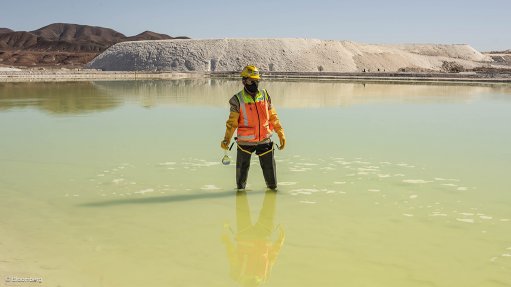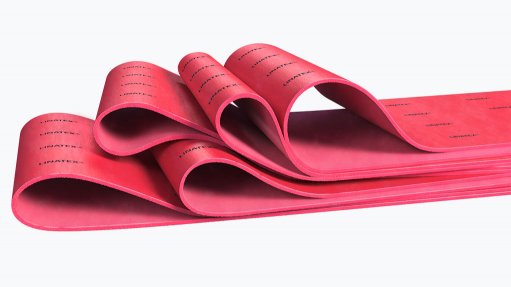Platinum demand to benefit from green hydrogen uptake in aviation
Sustainable aviation fuels (SAFs) based on renewable energies and green hydrogen are the way of the future for sustainable flying, says Siemens Energy, which has partnered with energy supplier Uniper, petrochemicals company Sasol and aircraft manufacturer Airbus to launch the Green Fuels Hamburg project.
The project is investigating the feasibility of commercially producing SAFs in Germany.
The four partners cover the entire value chain for the production of carbon-neutral kerosene – the fuel of choice for most aircraft.
Carbon-neutral kerosene, also called power-to-liquid kerosene, is a synthetically produced liquid hydrocarbon that is made in three stages.
The first stage comprises the use of renewable energy to power electrolysers, which produce green hydrogen from water.
From the combustion process, carbon dioxide is captured and converted into carbon feedstock using direct air carbon capture technology. Carbon feedstocks are then synthesised with green hydrogen to generate liquid hydrocarbons.
The hydrocarbons are converted to produce a synthetic equivalent to kerosene.
Capturing and storing carbon dioxide is central to the production of synthetic kerosene, says the World Platinum Investment Council (WPIC), confirming that recapturing the carbon dioxide released during combustion and combining it with hydrogen closes the loop in that the carbon dioxide that was initially released is reused to create fuel, thereby reducing emissions from power-to-liquid production by as much as 90% compared with fossil fuels.
The Green Fuels Hamburg project aims to make a significant contribution to decarbonising the aviation sector through integrated green hydrogen and SAF production on an industrial scale.
The partners to the project aim to supply Hamburg with more than 10 t/y of synthetic kerosene from 2026 onwards.
Hamburg is considered a key location for the project in that it is close to renewable energy sources and has the necessary customers in industry and aviation.
A major advantage of synthetic kerosene is that it can be transported through existing networks of fossil fuel infrastructure, such as pipelines and filling stations.
Currently, synthetic kerosene is produced at a relatively high cost and on a small scale. However, this is expected to change as the green hydrogen ecosystem continues to ramp up worldwide.
According to aerospace group Airbus, green hydrogen production capacity could achieve an estimated 50-fold increase in the next six years. This means green hydrogen could be on track to supply up to 25% of the world’s energy needs by 2050.
THE CASE FOR PLATINUM
Platinum-based proton exchange membrane electrolysers are one of the two leading electrolysis technologies commercially available.
While the platinum needed to produce green hydrogen is gradually increasing in line with the expansion of electrolyser capacity, electrolysers use relatively small amounts of platinum and are built to last, meaning infrequent replacement.
Cumulatively, over the next 15 years, platinum demand from electrolysers is likely to be between one- and two-million ounces, depending on technology development over that period.
More significantly, the development of hydrogen infrastructure supports the wider market penetration of fuel cell electric vehicles (FCEVs).
Recent research by the WPIC highlights that supportive hydrogen policies could result in FCEV demand for platinum equalling current automotive demand by 2039, with broad-based commercial adoption of FCEVs potentially bringing this forward to 2033, adding over three-million ounces to yearly automotive platinum demand in 11 years.
Comments
Press Office
Announcements
What's On
Subscribe to improve your user experience...
Option 1 (equivalent of R125 a month):
Receive a weekly copy of Creamer Media's Engineering News & Mining Weekly magazine
(print copy for those in South Africa and e-magazine for those outside of South Africa)
Receive daily email newsletters
Access to full search results
Access archive of magazine back copies
Access to Projects in Progress
Access to ONE Research Report of your choice in PDF format
Option 2 (equivalent of R375 a month):
All benefits from Option 1
PLUS
Access to Creamer Media's Research Channel Africa for ALL Research Reports, in PDF format, on various industrial and mining sectors
including Electricity; Water; Energy Transition; Hydrogen; Roads, Rail and Ports; Coal; Gold; Platinum; Battery Metals; etc.
Already a subscriber?
Forgotten your password?
Receive weekly copy of Creamer Media's Engineering News & Mining Weekly magazine (print copy for those in South Africa and e-magazine for those outside of South Africa)
➕
Recieve daily email newsletters
➕
Access to full search results
➕
Access archive of magazine back copies
➕
Access to Projects in Progress
➕
Access to ONE Research Report of your choice in PDF format
RESEARCH CHANNEL AFRICA
R4500 (equivalent of R375 a month)
SUBSCRIBEAll benefits from Option 1
➕
Access to Creamer Media's Research Channel Africa for ALL Research Reports on various industrial and mining sectors, in PDF format, including on:
Electricity
➕
Water
➕
Energy Transition
➕
Hydrogen
➕
Roads, Rail and Ports
➕
Coal
➕
Gold
➕
Platinum
➕
Battery Metals
➕
etc.
Receive all benefits from Option 1 or Option 2 delivered to numerous people at your company
➕
Multiple User names and Passwords for simultaneous log-ins
➕
Intranet integration access to all in your organisation

















